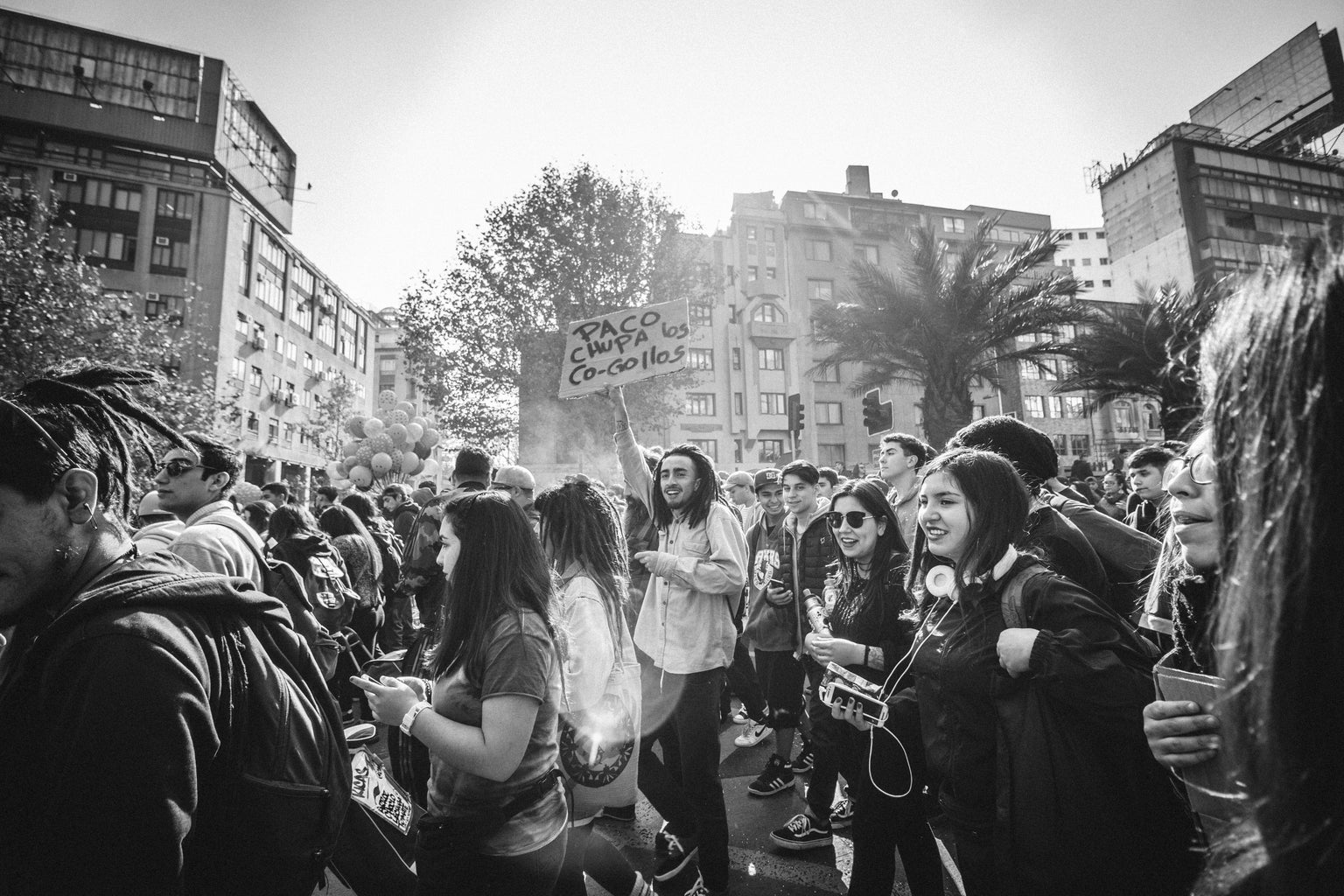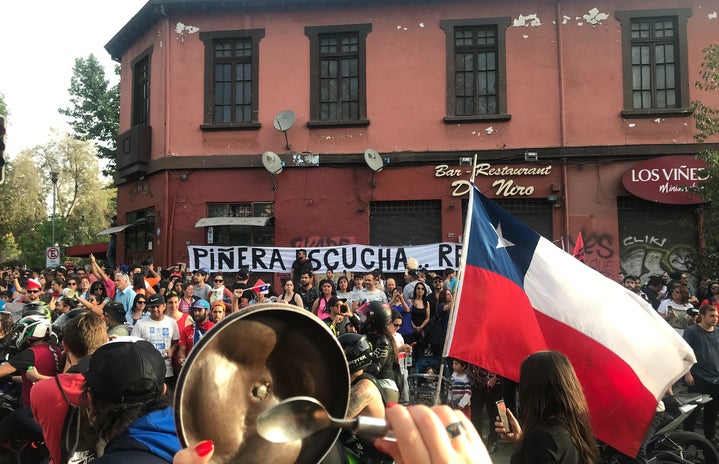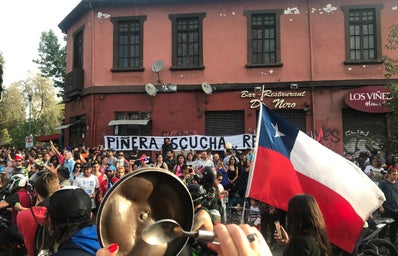For the last month, you have probably heard in the news or have seen social media posts about the events occurring in Chile… but you don’t really have a clue of what’s going on in there. No need to worry anymore. As a very concerned Latin American, I am here to tell you all about it.
In early-October the Chilean government announced that a weakening currency and higher fuel costs demanded an increase from 800 to 830 pesos in the cost of rush-hour public-transit fares in Santiago de Chile, Chile’s capital. That’s a rise of about 4 US cents, but a significant change for the people of Chile. As a result, a big group of Chileans has gone out to the streets to protest this measure and the high cost of living in the country. The protests spread to other cities of the country and now some have also turned violent. And even though Chile’s president, Sebastián Piñera froze the rate hike and appointed more centrist ministers to his Cabinet, the damage has already been done and Chileans are still out on the streets.

You see, what’s peculiar about Chile’s situation is that until these recent set of events, it was the most prosperous country of Latin America and the hope of the entire continent. Chile has the best higher education in the region and a lot of great working opportunities if you are a migrant. However, it also has one of the widest gaps between rich and poor of all the Organisation for Economic Co-operation and Development countries and it’s one of the few countries in Latin America where public universities are not free —in fact, they’re really expensive.
The protests ignited when a group of high-school students organized to protest against the rise in the public transit fare. They did this by organizing mass fare-dodging. They went from their high schools to the subway station and started jumping the turnstiles. In the following days, adults joined the movement. Three days later, the subway service was suspended. Thousands of people that would normally use the subway were just walking around the city trying to find a bus. Some would just walk back to their houses after work, and there was a lot of indignation in the air. As a come-back, people started to attack the subway stations, and some were even burned. By the end of the day, the government decided to declare a state of emergency, and that meant to bring the military to help reconstruct public order. That was when the whole situation exploded. No one wants to see the military in the streets, but in Chile it reopened a deep historical wound of Pinochet’s regime —an extreme rightist dictator who, for almost 20 years, ruled Chile inflicting political persecution and curbing freedom of expression.

From the first day, the National Human Rights Institute started putting out reports every day. And by a week later, after the state of emergency was declared, 3,000 people were detained —a lot of them were teenagers. There were also over 200 people who lost their sight due to being shot by nonlethal ammunition. And then, at least 20 people killed on official records.
One of the latest measures that the country has made after the protests is that on Monday, November 11, President Piñera announced they would initiate a process to draft a new constitution for the country, which was one of the main petitions by protesters.
A big part of the cause of this issue is that Chile has a highly privatized economy, which has made the country as a whole very prosperous, but people in Chile are living in significantly unfavorable conditions compared to the country’s economy. They don’t live in extreme poverty, but they have to work two or three jobs to survive. Like Uber drivers who usually work at their second job during the latter part of the day, most women in Chile have to work several jobs because they have to care for other people and they don’t get paid much, or receive pension or any other kind of insurance for that matter. The pension system was destroyed in Chile and the people basically have savings accounts that they are forced to put their money into every month. That money goes to financial institutions that make a lot of profit out of it and you the people get paid whatever is left when they are old.
What is also peculiar in this situation is that people in other countries in Latin America are also suffering really deep economic wounds because they have a really heavy public economy where all the services are controlled by the government, which is the total opposite of what Chile has —take the examples of Venezuela, Nicaragua, Bolivia and Ecuador which are also really frequently in the news. This has been giving a lot to think for decades of what would be the perfect measure for a stabilized economy in Latin America but, until someone finds a responsible government who wants to find a balance, people in neighboring countries in this region are still heavily affected by.


